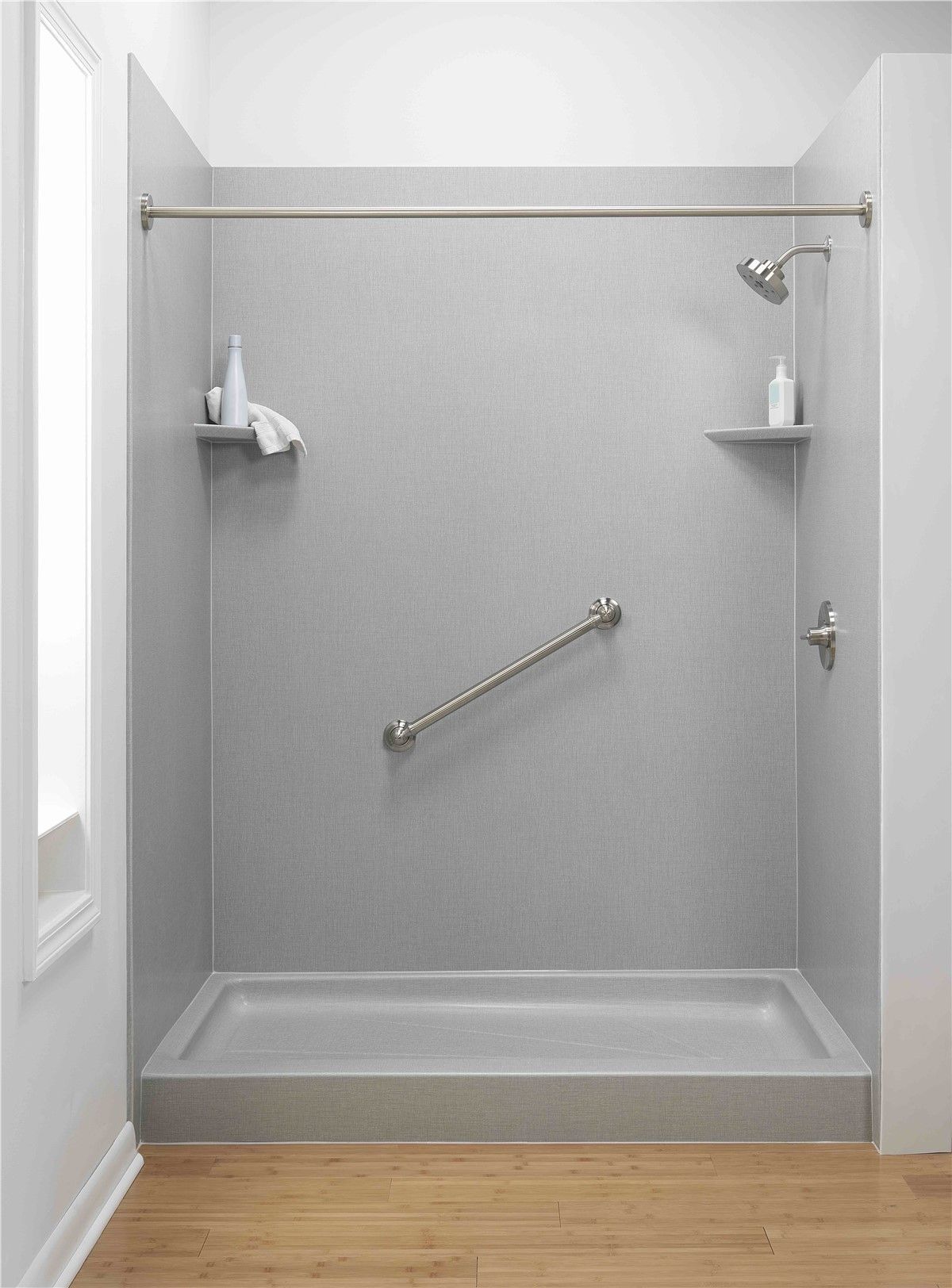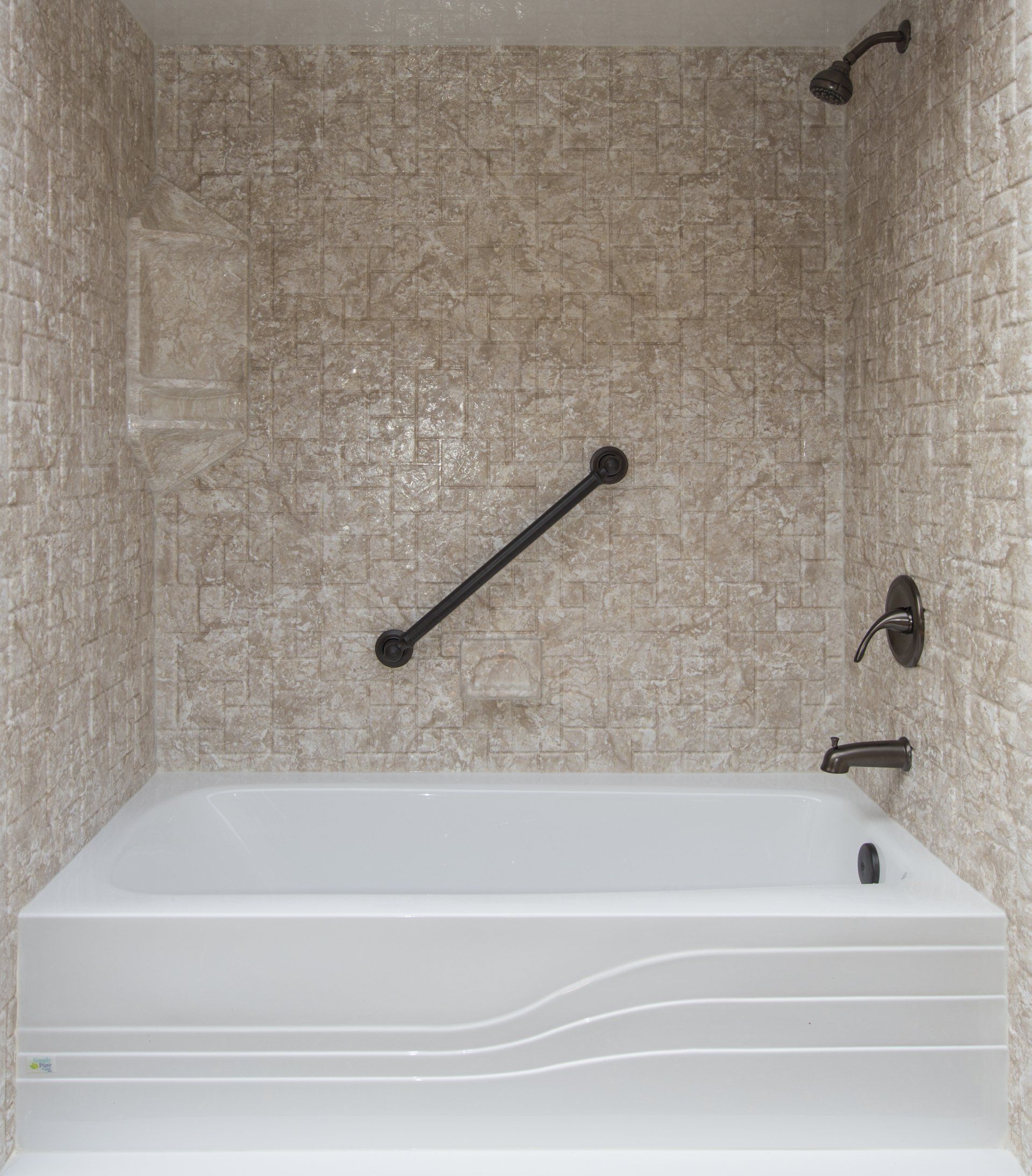How to choose the best walk-in shower for your New Hampshire home
When it comes to upgrading your bathroom, especially with a walk-in shower, the first thing you want to do is understand your own needs and preferences. After all, your bathroom is one of the most personal spaces in your home, and it should reflect not just your style but also your practical requirements.
If you’re living in New Hampshire, like many of our customers at Cloud 9 Tubs, you’re likely familiar with the diverse range of home styles found throughout the state. From classic colonial houses to modern builds, each home has its own unique character—and that should extend to your bathroom as well.
But before diving into design choices, it's important to consider what you actually need from your walk-in shower. Is safety your primary concern? Maybe you’ve had a close call or know someone who has, and you want to reduce the risk of falls. Or perhaps you’re looking to add a touch of luxury to your bathroom—a space where you can unwind after a long day. On the other hand, you might be thinking about the future and wanting to install a shower that will allow you to age in place comfortably.
Once you've got a clear idea of your priorities, you’ll be in a much better position to start looking at options that will meet those needs.
A walk-in shower is a significant investment, not just in terms of money but also in how it impacts your day-to-day life. It’s worth taking the time to really think about how you’ll be using it. Are you someone who enjoys long, luxurious showers, or do you need a quick, efficient rinse-off after a busy day? Do you want a shower that’s easy to clean and maintain, or are you okay with putting in a little extra effort to keep it looking pristine? Your answers to these questions will help guide you towards the best walk-in shower for your home.
But it's not just about function—style plays a huge role too. You’ll want a shower that complements the overall aesthetic of your home. Whether your bathroom is a serene spa-like retreat or a bold, modern space, your walk-in shower should fit seamlessly into that vision.
In the next section, we’ll dive into the different types of walk-in showers available and how to choose the right one based on your specific needs and the style of your home.
Exploring Different Types of Walk-In Showers
Now that you’ve taken some time to think about your needs and preferences, it’s time to explore the different types of walk-in showers available. The good news is that there’s a wide variety of options, so you’re sure to find something that fits both your functional needs and your style preferences.
Frameless Glass Showers
One of the most popular choices, especially in modern or contemporary homes, is the frameless glass shower. These showers are sleek, stylish, and give your bathroom a clean, open feel. The absence of metal framing around the glass panels makes the space look larger and more airy, which is perfect if you’re working with a smaller bathroom. Plus, the minimalistic design of a frameless shower can complement almost any style, from minimalist to luxury.
But it’s not just about aesthetics. Frameless glass showers are also easy to clean—no metal frames mean fewer nooks and crannies where mold and mildew can build up. However, if privacy is a concern, you might want to consider frosted or textured glass options instead of clear glass.
Curbless Showers
Curbless or barrier-free showers are another excellent option, especially if accessibility is a top priority. As the name suggests, these showers have no curb or threshold to step over, making them ideal for individuals with mobility issues or those planning for aging in place. Not only are curbless showers functional, but they also offer a modern, streamlined look.
A curbless design can make your bathroom feel more spacious and less cluttered, especially if you opt for a continuous floor tile that extends from the shower area to the rest of the bathroom. This type of shower also provides flexibility in design, as it can be customized to fit into various spaces, whether you’re working with a small powder room or a large master bath.
Walk-In Showers with Built-In Seating
For added comfort and safety, consider a walk-in shower with built-in seating. This feature is especially beneficial for those who need a little extra stability while bathing or simply enjoy the option of sitting down while showering. Built-in benches can be incorporated into various shower designs, from corner seating in smaller showers to full-length benches in larger spaces.
The seating can also be made from a variety of materials that complement your shower’s overall design. Whether you choose a sleek marble bench or a warm, natural wood seat, this feature can add both functionality and a touch of luxury to your shower experience.
Custom-Tiled Showers
If you’re someone who loves personalizing your space, a custom-tiled shower might be the best choice for you. With custom tiling, the design possibilities are virtually endless. You can choose from a wide range of materials—ceramic, porcelain, natural stone, or even glass—to create a unique look that reflects your personal style.
Custom-tiled showers are also highly durable and can be designed to match the exact dimensions of your bathroom, ensuring a perfect fit. Plus, tiles offer excellent resistance to moisture, making them a practical choice for a walk-in shower.
In the next section, we’ll discuss how to consider the layout of your bathroom when choosing the best walk-in shower, as well as the importance of proper installation.
Considering Bathroom Layout and Installation
With a clear understanding of the types of walk-in showers available, the next crucial step is to consider how your chosen shower will fit into the layout of your bathroom. The layout plays a significant role in determining not just the functionality of your new walk-in shower but also its overall aesthetic impact on the space.
Maximizing Space
If your bathroom is on the smaller side, you’ll want to choose a walk-in shower design that maximizes space without making the room feel cramped. Frameless glass showers, as we mentioned earlier, are a great option because they create an illusion of more space. Another option is to install a corner shower, which makes use of otherwise wasted space and leaves more room for other bathroom fixtures.
For those with larger bathrooms, the possibilities are almost endless. You could opt for a spacious, custom-tiled walk-in shower that becomes a focal point of the room or consider a luxurious curbless shower with multiple showerheads and built-in seating. The key is to ensure that your walk-in shower complements the existing layout and doesn’t overpower the space.
Proper Drainage
No matter the size of your bathroom, proper drainage is essential for a walk-in shower. Since these showers often lack a raised threshold, it’s important that the shower floor is slightly sloped toward the drain to prevent water from pooling or spilling into the rest of the bathroom.
When planning the layout, consider where the drain will be placed. Center drains are the most common, but linear drains along one side of the shower can add a sleek, modern touch and are particularly effective in curbless showers. Discuss these options with your installer to find the best solution for your specific bathroom layout.
Shower Door or No Door?
Another layout consideration is whether you want your walk-in shower to have a door or be completely open. Open showers, often called wet rooms, can make a bold design statement and are easier to access, which is a plus for those with mobility concerns. However, they do require careful planning to ensure that water doesn’t splash onto the rest of the bathroom floor.
On the other hand, a glass shower door—whether frameless or framed—can help contain water while still allowing light to pass through, keeping the bathroom feeling bright and open. If privacy is a concern, frosted or textured glass can be used instead of clear glass.
Impact on Bathroom Flow
It’s also essential to think about how your new walk-in shower will impact the overall flow of your bathroom. A well-designed shower should enhance the usability of the space, not hinder it. Consider the placement of other fixtures, such as the toilet, sink, and any storage units, to ensure that the shower fits seamlessly into the existing layout.
For example, if your bathroom is long and narrow, placing the walk-in shower at the far end can create a more balanced look and make the room feel more spacious. In a more square-shaped bathroom, a corner shower might be the best option to maintain a smooth flow.
Importance of Professional Installation
Finally, while it’s tempting to DIY home improvement projects, installing a walk-in shower is one area where professional help is highly recommended. Proper installation is critical to ensuring that your shower is safe, functional, and long-lasting. A professional installer will have the expertise to handle any challenges that arise during the installation process, such as ensuring proper drainage, sealing, and waterproofing.
At Cloud 9 Tubs, we pride ourselves on our low-impact installations, which often allow us to remove your old tub or shower and install the new one in as little as one day. Our experienced team ensures that everything is done to the highest standard, so you can enjoy your new shower with peace of mind.
In the next section, we’ll dive into the materials and finishes that can elevate your walk-in shower from simply functional to truly luxurious.
Choosing Materials and Finishes for a Luxurious Walk-In Shower
Now that you’ve considered your bathroom layout and the importance of professional installation, it’s time to think about the materials and finishes that will truly make your walk-in shower stand out. This is where you can add a personal touch and elevate your shower from purely functional to a luxurious centerpiece in your bathroom.
Tile Choices
When it comes to tiling your walk-in shower, the options are nearly limitless. Tile is one of the most popular materials for walk-in showers because of its versatility, durability, and the range of design possibilities it offers. You can choose from ceramic, porcelain, natural stone, or even glass tiles, depending on the look you’re going for.
- Ceramic and Porcelain Tiles: These are great choices if you’re looking for something that’s easy to maintain and available in a wide range of colors and patterns. Porcelain tiles, in particular, are known for their durability and resistance to moisture, making them an excellent option for shower walls and floors.
- Natural Stone: If you’re aiming for a more luxurious, spa-like feel, natural stone tiles such as marble, granite, or slate can bring that elegance to your walk-in shower. Each piece of natural stone is unique, which means your shower will have a one-of-a-kind look. Keep in mind, though, that natural stone requires regular sealing to maintain its beauty and prevent water damage.
- Glass Tiles: For a more modern or artistic touch, consider glass tiles. These tiles can add a reflective quality that enhances the lighting in your bathroom, making it feel brighter and more spacious. Glass tiles are also available in a variety of colors and finishes, allowing you to create a custom design that matches your personal style.
Shower Floors
The material you choose for your shower floor is just as important as what goes on the walls. Your shower floor needs to be both slip-resistant and durable, while also complementing the overall design of your bathroom.
- Pebble Flooring: Pebble or river rock flooring is a popular choice for walk-in showers because of its natural, spa-like appearance and its excellent slip resistance. The uneven surface of the pebbles also provides a gentle foot massage, adding to the luxurious feel of your shower.
- Mosaic Tiles: Mosaic tiles are small, usually square tiles that are laid out in a pattern or design. They are a great option for shower floors because they provide excellent grip, reducing the risk of slipping. Mosaic tiles also allow for creative design possibilities, whether you want a classic look or something more artistic.
- Large Format Tiles: If you prefer a more streamlined, modern look, large format tiles can be used on the shower floor. Just make sure they have a textured finish to prevent slipping. The larger tiles mean fewer grout lines, which can make cleaning easier and give your shower a cleaner, more contemporary appearance.
Fixtures and Finishes
Beyond tiles, the fixtures and finishes you choose will play a significant role in defining the style and functionality of your walk-in shower. Here are some elements to consider:
- Showerheads: From rain showerheads that provide a soothing, gentle flow to handheld showerheads that offer flexibility and control, there’s a wide range of options to choose from. You might even consider installing multiple showerheads for a more luxurious, spa-like experience.
- Faucets and Controls: The style of your faucets and controls should match the overall design of your shower. For a modern look, go with sleek, minimalist fixtures in polished chrome or matte black. If your bathroom has a more traditional feel, consider fixtures in brushed nickel or oil-rubbed bronze.
- Glass Finishes: If you’re going with a glass shower enclosure, the finish of the glass is another detail that can enhance the look of your shower. Clear glass is the most common choice, but frosted or textured glass can add an element of privacy while still allowing light to pass through. You can also opt for glass with a custom etching or design for a unique, personalized touch.
- Accessories: Don’t forget the small details like towel bars, soap dishes, and shelving. These accessories should complement your shower’s design and add to its functionality. Built-in niches or corner shelves can provide storage without taking up extra space, keeping your shower area clean and organized.
In the next section, we’ll wrap up by discussing the benefits of a well-chosen walk-in shower and how it can enhance not just your bathroom, but your entire home.
The Lasting Benefits of a Well-Chosen Walk-In Shower
After carefully considering your needs, the layout, materials, and finishes, you’re almost ready to enjoy the walk-in shower of your dreams. But before you do, it’s worth taking a moment to reflect on the lasting benefits that a well-chosen walk-in shower can bring to your home and your life.
Increased Home Value
One of the most significant advantages of upgrading to a walk-in shower is the potential increase in your home’s value. Bathrooms are one of the most important rooms in the house when it comes to resale value, and a modern, stylish walk-in shower can be a major selling point. Homebuyers are often drawn to features that offer both luxury and practicality, and a walk-in shower delivers on both fronts.
Even if you’re not planning to sell your home anytime soon, knowing that your investment is adding to your property’s value can bring peace of mind. Plus, you get to enjoy the benefits of your new shower every day, making it a win-win situation.
Enhanced Safety and Accessibility
Safety is another key benefit, especially if you’ve opted for a curbless design or added features like built-in seating. A walk-in shower with these elements can significantly reduce the risk of slips and falls, making it a safer option for everyone, particularly older adults or those with mobility challenges.
In fact, many of our customers at Cloud 9 Tubs have shared how their new walk-in shower has made them feel more secure and confident in their own homes. The peace of mind that comes from knowing you can shower safely is truly invaluable.
Long-Term Durability
The materials and professional installation that go into a well-designed walk-in shower ensure that it will stand the test of time. Unlike some bathroom fixtures that might need frequent repairs or replacements, a high-quality walk-in shower is built to last. Whether you’ve chosen durable porcelain tiles, sturdy glass, or corrosion-resistant fixtures, your shower is an investment in both style and longevity.
And don’t forget, at Cloud 9 Tubs, we stand by the quality of our work with a lifetime warranty. You can rest easy knowing that your shower is protected against cracking, peeling, or fading over time.
Improved Daily Experience
Let’s not overlook the everyday benefits of having a walk-in shower that’s tailored to your needs. Whether it’s the convenience of a handheld showerhead, the luxury of a rain shower, or the practicality of easy-to-clean surfaces, a well-chosen walk-in shower can make your daily routine more enjoyable.
Imagine starting each day in a space that feels just right for you—a place where you can relax, refresh, and recharge. That’s the true value of a walk-in shower that’s been carefully selected and expertly installed.
A Personalized Space
Ultimately, your walk-in shower is more than just a bathroom fixture; it’s a reflection of your personal style and needs. From the choice of tiles to the type of fixtures, every decision you’ve made contributes to creating a space that’s uniquely yours.
At Cloud 9 Tubs, we believe that everyone deserves a bathroom that’s not only functional but also beautiful and personalized. Your walk-in shower should be a place where you feel comfortable, safe, and inspired—every single day.
Ready to Transform Your Bathroom?
If you’re feeling inspired and ready to take the next step, we’re here to help. At Cloud 9 Tubs, we specialize in transforming bathrooms into safe, stylish, and accessible spaces that enhance the quality of life for our customers. Whether you’re interested in a walk-in shower, a walk-in bathtub, or another bathroom upgrade, we’re dedicated to providing solutions that meet your needs while exceeding your expectations.
Contact us today to schedule a consultation and learn more about how we can bring your vision to life. Your dream bathroom is just a phone call away!
Blog






